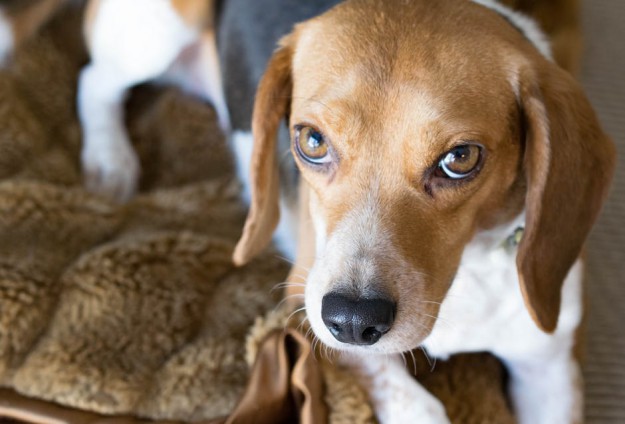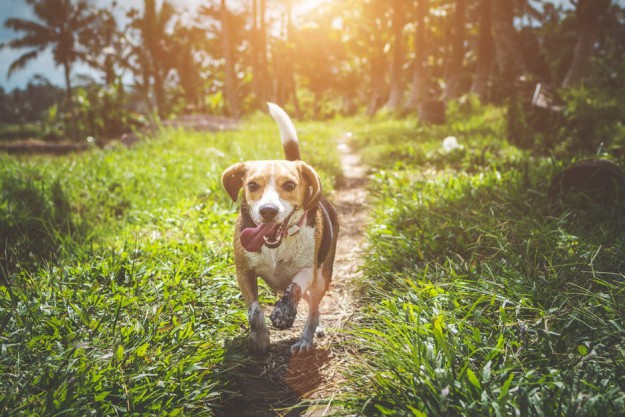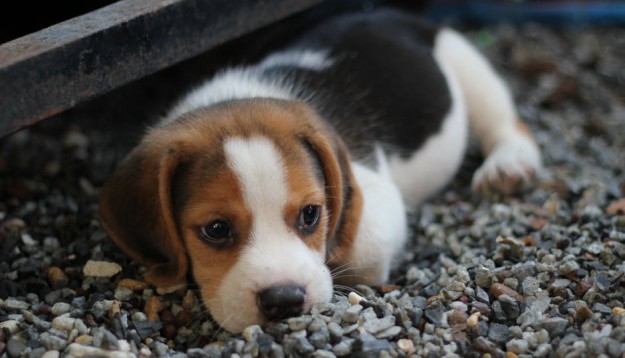
Beagle
USD $500-$800 Price Avg.
Hunting Dogs
Group
Purebred
Breed Type
Small
Size
12-15 years
Lifespan
Breed Information
| Group | Hunting Dogs |
|---|---|
| Popularity/Rank | 6 |
| Origin | England |
| Other Names | English Beagle |
| Breed Type | Purebred |
| Price (Avg.) |
USD $500-$800
How much does it cost to buy a Beagle? Beagle are usually priced differently from breeder to breeder and from place to place. As a rough guide, you can expect to pay between $500 to $800 if you purchase your dog from a reputable breeder. The price will increase if the dog has a fantastic pedigree. Dogs that already have basic training maybe even more expensive. But, most Beagles can be adopted through a shelter for a lower fee. |
| Size | Small |
| Weight |
Male: 22-25 pounds (10-11 kg),
Female: 20-23 pounds (9-10 kg) |
| Height |
Male: 14-16 inches (36-41 cm),
Female: 13-15 inches (33-38 cm) |
| Lifespan | 12-15 years |
| Recognized by |
AKC, FCI
The American Kennel Club in 1885 as a Hound breed. And FCI in the Scent hounds and related breeds group, in the Scent hounds section. |
| Purpose | Tracking Dog |
| Date of Origin | 1300s |
| Ancestry | North Country Beagle, Southern Hound, Talbot Hound |
Appearance & Maintenance
| Coat | Dense |
|---|---|
| Coat Colors | Black, Red, Tan, Tricolor, White |
| Grooming Level | |
| Shedding Level | |
| Eye Color Possibilities | Amber, Brown |
| Nose Color Possibilities | Black, Brown |
| Coat Color Possibilities | Black, Brown, Pied, Red, White |
| Coat Length | Medium |
| Coat Density | Normal |
| Coat Texture | Straight |
| Recommended Brushes | Nail Clipper, Slicker Brush |
| Brushing Frequency | Weekly |
Breed Characteristics
| Temperament | Delicate, Friendly, Gentle, Independent, Intelligent, Lively, Loving, Sweet |
|---|---|
| Intelligent | |
| Trainability | |
| Playfulness | |
| Sensitivity Level | |
| Affection Level | |
| Social Interaction Required | |
| Barking | |
| Watchdog Ability | |
| Territorial | |
| Biting Force | Low |
| Mouthiness | |
| Impulse to Wander or Roam | |
| Prey Drive | |
| Adaptability | |
| Tolerates Being Left Alone | |
| Fighting Dog | Not really |
Good & Friendly with
| Apartment Life Friendly | |
|---|---|
| Stranger Friendly | |
| Kid-Friendly | |
| Cat Friendly | |
| Dog Friendly | |
| Office Friendly | No |
| Senior Citizens Friendly | |
| Pet Friendly | |
| Friendly with First Time Owners | No |
| Service Dog | Yes |
| Therapy Dog | Yes |
| Detection, Sniffer or Security Dog | Yes |
| Search and Rescue Dog (SAR) | Yes |
| Boat Dog | Yes |
| Cart Pulling or Drafting Dog | Not really |
Health Elements
| Health Issues | |
|---|---|
| Health Problems | Beagle Dwarfism, Cherry Eye, Chinese Beagle Syndrome, Distichiasis, Epilepsy, Glaucoma, Hip Dysplasia, Hypothyroidism, Intervertebral Disk Disease, Patellar Luxation, Progressive retinal atro |
| Hypoallergenic | No |
| Energy Level | |
| Exercise Required | |
| Sleeping Required | |
| Weight Gain Potential | |
| Weather & Climate | Prefers average to warm weather conditions |
| Stinkiness | High |
| Drooling tendency | |
| Activity Level | High |
| Rec. Walk Mileage Per Week | 12 miles |
| Minutes of Activity Per Day | 60 minutes |
Food & Costing
| Avg. Daily Food | 0.5 to 1.5 cups of high-quality dry food a day, divided into two meals. |
|---|---|
| Cups Per Day | 1.5 cups |
| Daily Cost | $1.00 - $1.50 |
| Monthly Cost | $25.00 - $30.00 |
Reproducibility
| Gestation Duration | 60-64 days |
|---|---|
| How often can the Beagle have a litter? | Once a year. |
| Litter Size | 2-14 puppies, average 7 (Once a year.) |
Description
The Beagle is a small-sized hound dog breed that originated in England. They are known for their friendly and playful personalities, as well as their distinctive appearance. Beagles have a short, smooth coat that comes in a variety of colors including black, white, tan, red and lemon. They have long ears that hang down to the sides of their face and a tail that is usually carried high.
Beagles typically live between 12-15 years and can weigh anywhere from 18-30 pounds when fully grown. They are considered to be medium-sized dogs with an average height of 13-16 inches at the shoulder.
Beagles are known for being friendly and outgoing dogs who love to be around people. They are also very intelligent and eager to please which makes them easy to train. Beagles tend to get along well with other dogs, cats, children, and other animals if they are properly socialized from an early age.
The temperament of the Beagle is generally described as happy-go-lucky and curious which can sometimes lead them into trouble if not properly supervised! Beagles do require regular exercise in order to stay healthy both physically and mentally so it’s important for owners to make sure they get plenty of walks or playtime each day.
When it comes to health issues, Beagles can be prone to certain conditions such as hip dysplasia or eye problems so it’s important for owners to keep up with regular vet visits in order to catch any potential issues early on before they become more serious problems down the line.
Beagles have an excellent adaptability level which makes them great pets for families who move around often or those who live in apartments or smaller homes since they don’t require much space or exercise equipment like some larger breeds do! The benefits of owning a Beagle include their loyal nature towards their owners as well as their intelligence which makes them easy trainable companions!
History
The Beagle is a small to medium-sized hound, similar in appearance to the much larger foxhound. The Beagle is one of the most popular dogs in the United States. The history of the Beagle breed is a long and interesting one.
The Beagle breed is thought to have originated in England in the 1500s. The word "Beagle" is thought to be derived from the French word "beguel," which means "open throat." The Beagle was originally bred as a hunting dog, and was used to track rabbits and hare. The Beagle was an excellent choice for this type of work because of its keen sense of smell and its ability to stay on track even when distractions are present.
As time went on, the popularity of the Beagle as a hunting dog began to decline. This was due in part to the fact that other breeds, such as the Foxhound, were better suited for this type of work. In addition, many landowners began to see hunting as a sport rather than a necessity, and so they no longer needed dogs for this purpose. As a result, the Beagle breed became less common.
In 1884, however, things changed for the Beagle breed when Queen Victoria took an interest in them. The Queen kept several Beagles as pets, and their popularity began to increase once again. It wasn't long before people all over England were clamoring for their own Beagles!
The Ancestry of the Beagle dog has been traced back to England where it was developed as a cross between several different types of hounds including: Talbot Hound (now extinct), North Country Beaver Hound (now extinct), Southern Hound (now extinct), Harrier and possibly Bloodhound or Basset Hound which resulted in creating today's modern day beagle we know and love. From here they were brought over by settlers to America where they became just as popular eventually becoming one of America's favorite family pets and companion animals known for their gentle nature, great with kids and other animals making them ideal candidates for therapy dogs..









































